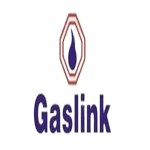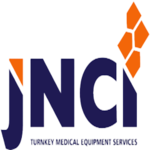GreenPower GP Consulting Services is drawn from our vast experience in energy and power sector, and importantly the body of knowledge of our experts.
Our experts diligently interpret clients’ needs through a collaborative process leading to a sustainable and cost effective solutions,
we undertake relevant feasibility and pre-project studies on energy and power projects to guide necessary investment and technical designs needed for the project.
We understand that design is the heart of any system and successful project and a poorly designed and badly planned project is liable to early breakdown and failure.

We understand that design is the heart of any system and successful project and a poorly designed and badly planned project is liable to early breakdown and failure:
We undertake among other services like:
-Load Audit and System Design
-Energy and Power Audit
-Power Factor Correction
-Energy Efficiency Conversion Studies and Implementation
-Service Level Maintenance Support
-Training
-Project and Contract Management
-Outsourcing
whether it is Government, Corporate organization or individual, our bespoke reports would provide for intelligent and informed decision making
Training
We offer technical training on renewable energy solutions. Our training service to clients insights on the importance and benefits of renewable energy to assist them in decision making and delivery expectations. This include analysis of our products, services and new innovations technical workshop on and of s systems
We also offer operation, maintenance and safety training on renewable energy applications, especially solar energy.
Project and Contract Management
GreenPower GP provides full capability of services throughout the life cycle of a project. Our project management team has considerable experience in the delivery of turnkey renewable energy and Power projects.
We focus on continuous monitoring of activities from conception to handover to ensure compliance against cost and time constraints. Our Project Management services include:
-Project Feasibility Studies
-Planning, Supervisory Cost Analysis
-Technical Advisory
Energy Audits

GP Energy Audit is a structured engineering service with a clear objective to understanding the energy consumption patterns of a facility, be it a household, commercial building or industrial setting. The Energy Audit is most required before deployment of alternative power supplies like solar or inverter systems in other to establish how energy that would be deployed will be used effectively and efficiently
To begin with, the external environment of the facility is very critical aspect of the audit and it is always the first point of call such as North-South orientation of facility, type of external wall, vegetation around the facility and window surfaces, while the interior inspection will cover electrical installations and appliances, electricity and water consumption patterns. and finally the behavioral pattern of users
For Energy Audit to be effective, people should be exposed to an education and awareness campaign in order to effect behavioral change over use of air conditioners, fridge access or switching on-and-off lights in unoccupied rooms or spaces. Adopting best practices could factor 15% cost reduction benefits to the occupants. Some of the measures could involve retrofits, replacement of incandescent with fluorescent light bulbs or ageing equipment upgrades as cost-saving measures.
Power Audit.

Several millions of Naira are lost daily to fire and inefficient loads due to poor electrical infrastructures in as little residential apartments to as large as industrial complex, most importantly, aside lost of critical company and personal assets to bad electrical installations, lives are lost too.
The danger is that, bad electrical installation is a time bomb and often ignore by many due to ignorant and believe that God will Protect, it is recommended that power audit should be conducted annually like health check to determine its status, integrity and capacity to continue to function as designed. ” Yes, God protect but we must do the needful”
Power Audit business and family is all about safety, economy and sustainability.
What is Power Audit ?
Power Audit is an engineering activity with objective to evaluate and report risks within electrical infrastructure. Identify anomalies and propose solutions, also identify short term remedies while the long term solutions may be implemented in phases subject to severalty of the issues identified and budget constraints of customer.
The audit will entail us to conduct thorough load studies from simple current measurements and hot spot checking at termination points to detailed power analysis using sophisticated power analyzers over several weeks to generate useful data on peak demand , usage patterns electrical transient harmonics, frequency analysis and utility power quality.
Scope of the Audit
- Determination of power quality of the facilities under investigation
- Determination of power quality needs of critical equipments ( redundancy and availability)
- Single point of failure analysis, present constraints, capacity , risk and redundancy analysis
- Continuity and integrity of connections checks
- Quality and capacity of existing electrical equipment
- Power protection system analysis
- Earth integrity test.
- Cable sizing and Coding
- Circuit breaker trip setting and fault current carrying capacity reviewed
- Circuit breaker coordination review
- Monitoring and report
- Comprehensive report with measurement and recommendation
Benefits of the Audit
- improving power quality of the facilities especially to critical equipment
- The chance of fire outbreak due to bad electrical installation and appliances is reduced to near zero.
- It is economic, safety and sustainability gain
- Power audit reduces electric bill by more than 30% as inefficient loads are identified and taking out of the power network
- Valuable work hours are protected and dirty electricity can damage critical electronic working tools like computers, printers, switches etc, disrupting business activities
Considering the above assertions, we therefore ask that you commission us to carry out the power audit of your facilities which is in tandem with the saying ”prevention is better than cure”
LOAD AUDITS & SYSTEM DESIGN

Load Audit is a tally of all the heat and electricity use in our homes/offices. It assesses the electrical energy demand of the appliances in our homes/offices to find ways of reducing them.
The basic idea of an electrical energy audit is to analyze the amount of electrical energy used by every appliance/device/load in our homes/offices to develop an appropriate solution for our various load demands.
System Design – Basic Parameters
In the quest to develop an effective solution that would suit our specific power needs, it is essential to consider the following
:
Load Type/Capacity
Inverter/UPS Size & Type
Backup Time
Grid Supply (Utility)/Generator Availability
Battery Type
Budget
LOAD TYPE / CAPACITY
In a bid to design an effective and functional Solar, Inverter, or UPS system, it is pertinent to understand the type of load to be powered. This is so important to determine the Size and Type of UPS/Inverter that would be capable of handling such loads.
We have different types of load and these loads play a huge part in the effective functionality of the UPS/Inverter system. The Load Types Include Basic Loads (Household & Office appliances); Inductive Loads (Elevators, Escalators, Medical Equipment, etc.) as well as Very Sensitive/Critical Loads (IT Equipment, Medicals, etc.).
The Cumulative of these load wattages determines Size and Type of UPS / Inverter be used.
INVERTER/UPS SIZE & TYPE
What is an Inverter?
An inverter is a compact, rectangular-shaped piece of equipment that is usually powered by either a combination of batteries hooked together in parallel or by a single 12V or 24V battery. In turn, these batteries can be charged by PHCN supply, gas generators, automobile engines, solar panels, or any other conventional sources of power supply.
The primary function of an inverter is to convert Direct Current (DC) power into standard, Alternating Current (AC). This is because, whereas AC is the power supplied to industry and homes by the main power grid or public utility, the batteries of alternating power systems store only DC power. Moreover, virtually all household appliances and other electrical components and equipment depend solely on AC power to perform.
UPS Vs. Inverter
- The basic function of both Inverter and UPS is the same in that they store electricity in a battery when power is available, and provide it to various devices in the event of an electricity outage. However, they both are different in their circuitry, price, functions, etc. All UPS contain an inverter as well as a battery charger, but not all inverters offer a built-in battery charger, which would then need to be purchased separately.
- A key difference between an inverter and a UPS is the time taken by them to provide power supply from the batteries in the event of a power failure: an off-line UPS (the standard) switches to battery power within 3 to 10 ms after mains power has been lost. An inverter changes over in anything from 25 to 500 milliseconds. Gadgets that can’t tolerate even this time lag or which may be damaged by being incorrectly shut down, such as a computer or sensitive medical equipment, are paired up with a UPS rather than an inverter, precisely for this reason.
- Another notable difference between the two, is that true online double-conversion UPS are credited with regulating and monitoring the fluctuations in the flow of electricity. UPS protect against line abnormalities like surges, voltage fluctuation, under-voltage, over-voltage, spikes, and noise. This is the main reason why electronic devices featuring delicate circuitry are backed-up using a UPS, instead of an inverter. The same doesn’t hold for
the inverter, as it simply stores and relays electricity in the event of a power failure, but it doesn’t monitor it.
Types of Inverter Based on Output Waveform
True Sine Wave Inverters have been developed to replicate, if not improve, the quality of power provided by main power grids or power utilities. They are specifically recommended to power high energy-consuming electronic gadgets and equipment. True Sine Wave inverters are more expensive than Modified Sine Wave inverters and are the more powerful and efficient option of the two.
Modified Sine Wave inverters are much cheaper and are capable of running fewer or selected number of household appliances and fixtures, for example – kitchen appliances, lights, and small power tools. However, this type of inverter may not possess the capacity to power high energy-consuming equipment and appliances, for example – computers, microwave ovens, air-conditioners, heaters, and laser printers.
Square Wave Inverters are the simplest form of output wave available in the cheapest form of inverters. They can run simple appliances without problems but not much else, it would damage such appliance(s).
Based on Size & Battery Configuration
The size of inverters ranges from as low as 100w, to well over 5000w. This rating is an indication of the capacity that the inverter can simultaneously and continuously power a high-wattage piece of equipment or appliance or a combination of multiple units of such items.
The Battery Voltage also ranges from 12VDC to as high as 720VDC
BACKUP TIME / AUTONOMY
This is the estimated period for the specified load to run on the battery (accumulator) when there’s a power outage. The backup time determines the number of batteries that would be sufficient to cater for the specified load within the specified time ceteris paribus.
It should, however, be noted that if the load is increased beyond the specified load level, the backup time decreases and vice-versa.
SUPPLY FROM GRID
The Grid is critical to the effective running of the inverter/UPS/Solar Solution.
The Inverter/UPS systems rely solely on the grid to charge the batteries for storage in the event of a power outage.
The requirement of the Grid is OPTIONAL when designing for Solar solution depending on clients’
specification: OFFGRID or HYBRID
INVERTER BATTERY & TYPES
Inverter batteries are designed to better handle the power requirements of a power backup supply system. It is quite different from car batteries because, under normal operation, inverters require a large amount of current to supply to appliances/devices over a long period.
Hence, the Inverter battery must be able to supply a reasonable amount of current over long periods whereas car battery is designed for mainly starting the car engine and maybe power the car electronics, which are mostly low power.
All inverter batteries in the market are rechargeable lead-acid batteries. Some require more maintenance, and some are ‘almost’ maintenance-free. They are usually rated 2V, 6V, and 12V. Broadly speaking, there are two ways to categorize lead-acid inverter batteries.
When differentiating batteries based on electrolyte technology, the two battery types are:
- Flooded or Wet Cell batteries or VLA battery
- Sealed Lead Acid (SLA) or Gel Cell batteries or VRLA battery
Flooded or wet cell batteries are the standard lead-acid batteries which require more maintenance and need to be kept upright all the time. SLA batteries are also known as maintenance-free batteries, although it still requires some sort of cleaning and is more expensive than flooded ones.
When differentiating batteries based on plate technology, the two battery types are:
- Flat Plate
- Tubular inverter batteries
Tubular inverter batteries are more sophisticated with a life span that could be 8- 10 years and are more efficient than flat plate lead-acid batteries.
Note: You’ll find wet cell battery with a flat and tubular plate and similarly you’ll get gel cell battery with flat and tubular plates.
COMMON TERMS USED IN SYSTEM DESIGN
- Watt (W): Watt is the measure of how much power a device uses when turned on or can supply.
If a device uses 100 watts, it is simply the voltage times the ampere (rate of current). If the device takes 10 Amps at 12 Volt DC, it uses 120 watts power. That is 10A x 12 V = 120 W.
- Watt Hour (WH): A watt-hour (or Kilo Watt-hour – kWh) is simply how many watt times, how many hours the device is used. If the device uses 100 watts for 10 hours, it is a 1000-watt hour or
1 kWh. The electricity tariff is based on kWh.
- Ampere (A): It is the measure of electrical current at the moment. Amps are important to determine the wire size for connecting the inverter to the battery. Low gauge wire will heat up and burn if heavy current flows through it from the battery.
- Ampere Hour (Ah): Amp-Hour usually abbreviated as Ah is the Amps x Time. Ah is the measure of battery capacity which determines the backup time of the inverter
SOLAR ENERGY
Solar energy is created from sun radiation.
Solar power is captured when energy from the sun is converted into electricity or used to heat air, water, or other fluids.
There are currently two main types of solar energy technologies:
- Solar thermal: these systems convert sunlight into thermal energy (heat). Most solar thermal systems use solar energy for space heating or to heat water (such as in a solar hot water system). However, this heat energy can be used to drive a refrigeration cycle to provide for solar-based cooling. The heat can also be used to make steam, which can then be used to generate electricity using steam turbines. It is considered more efficient to build solar thermal electricity generators at large scale, typically in the tens to hundreds of megawatts
- Solar photovoltaic (PV): the conversion of sunlight directly into electricity using photovoltaic cells. PV systems can be installed on rooftops, integrated into building designs and vehicles, or scaled up to megawatt-scale power plants.
ENERGY CONVERSION EFFICIENCY STUDY & IMPLEMENTATION

'We all complain that our environment is taking a dangerous turn, little did we know that we are all contributors, we use energy irresponsibly without recourse to its impact on the environment and its economic implications"
Energy conversion efficiency (ECF) is the ratio between the beneficial output of an energy conversion machine and the input, in terms of energy. The output and input energy can be chemical, electrical, mechanical, light (radiation), or heat.
Every human activity and the entire procedure of human existence, including that of non-living things, cannot exist without energy conversion. In like manner, activities like thermal and chemical reactions including actions that can make you think or perform all involve energy conversion. Also in the production and utilization of energy, energy conversion applies.
Energy Conversion can be carried out in a device that converts energy from
one form to another. For example, with the help of a heat engine, the conversion process takes place in a dam, where potential energy is converted to kinetic energy using the turbine in flowing water, then the kinetic energy is finally converted to electricity through an electric generator. This illustration shows how the heat engine as a device converts one form of energy to another.
Mathematically, the energy conversion of a device is given as:
Device efficiency = Useful energy output / Energy input
According to the 1st law of thermodynamics, energy is conserved in all its transformations. The useful energy speaks about the purpose of the device. Another example of a device is the electric heater which gives its energy output as heat and the energy input is the electricity.
Other examples of tasks performed by common energy conversion devices (Table 1.1)
| Energy Conversion Device | Energy Input | Useful Energy Output |
| Fluorescent Lamp | Electricity | Light |
| Silicon Solar Cell | Solar Energy | Electricity |
| Incandescent Lamp | Electricity | Light |
| Battery | Chemical Energy | Electricity |
| Electric Heater | Electricity | Thermal Energy |
Energy conversion devices& their efficiencies (Table 1.2)
| Energy Conversion Device | Energy Conversion | Typical Efficiency % |
| Electric Heater | Electricity/Thermal | 100 |
| Battery | Chemical/Electricity | 90 |
| Incandescent Lamp | Electricity/Light | 5 |
| Silicon Solar Cell | Solar/Electricity | 15 |
| Fluorescent Lamp | Electricity/Light | 20 |
Table 1.2 above explains how efficiency is quantified and how some energy conversion devices are more efficient than others. It should be noted that higher efficiency means lower energy costs.
Implementation Measures:
Energy Production
There is a need to introduce more efficient generation/conversion through:
- Waste reduction from electricity generation
- Improved maintenance practices
- Utilization of energy-saving and efficient technologies for power generation e.g. solar systems
- Application of modern process technologies like clean coal processes.
Energy transmission and distribution of electricity:
The mode of transmission and distribution of energy from the point of generation to the end-users should be done efficiently with improved control of systems, e.g. better balancing of phases, voltage regulation, power factor improvement,
- Efficient and increased distribution of power
- Higher transmission voltages
- State-of-the-art technologies such as low-loss transformers, smart metering, etc.
Energy Consumptions
Acquisition of energy-efficient equipment e.g. refrigerators, boilers, furnaces, industrial dryers, pumps, compressors, lighting, domestic appliances, air conditioning systems. This is highly essential in areas where equipment is operated over long periods.
Improved maintenance of all equipment.
Improved metering of fuel, electricity, and stream flows. Also, Information on energy usage allows consumers to appreciate better the quantities of energy consumed and the time and purpose of such consumption: this is also an important step to improving energy efficiency,
Need for Behavioral Change:
Monitoring energy efficiencies of equipment to ensure design operating parameters and performance is perfect.
Changes in equipment usage both at home and in the office, such as switching off appliances that are not needed and avoiding excessive use of “phantom energy” for many types of equipment.
Choosing efficient modes of transportation e.g. public transport versus cars for individuals, rail versus road for freight, where such alternatives are available
Benefits of Energy Efficiency Implementation
Energy Efficiency Implementation is highly beneficial for all energy consumers,
- It reduces operational cost
- It improves the quality of life
- It reduces carbon footprint
- It increases revenue for consumers when they invest in clean technologies over those who are not.
- It can also be beneficial for various business sectors that consume a large amount of energy like schools, factories, malls, financial institutions, etc.
More importantly, when energy efficiency measures are implemented at homes or in businesses, it results in high behavioral changes. The benefits of these changes propel the consumer to keep doing more to increase their savings. These behavioral changes like turning off lights when not in use, installing thermostats, and regular maintenance of equipment, create more awareness for others to become more energy efficient.
Energy Efficiency Programs that can aid the process of implementation.
- Development of energy efficiency policies and strategies.
- Energy awareness in line with consumption and related aspects of energy efficiency.
- Encouraging energy auditing and energy assessment both in the public and private sectors.
- Publicity and development of energy efficiency best practices, and information on norms and standards applicable to different sectors.
- Promotion and facilitation of international collaboration and cooperation.
In conclusion
Implementing energy-efficient measures at all stages of energy generation and utilization could reduce significantly the negative impacts of energy use on the environment and human well-being, and proliferate the availability of primary energy reserves while achieving maximum benefits in terms of outputs from the available energy. This will reduce the cost to both producers and users, as well as maintain the same level of energy-dependent activities.
Power Factor Correction

In electrical engineering, electrical energy supply to homes, businesses and factories has both resistive and inductive loads, therefore power factor is the ratio between Real Power and Apparent Power. In an electrical installation, It is desirous to have power factor of 1, which is called unity PF where all the electrical energy supplied are used for productive work.
Power Factor is the measure of energy waste in an electrical installation and is calculated as the ratio of real power ( Actual usable power) and apparent Power (Actual usage + Unusable power), it is a power inefficiency in electrical network
Benefit of Power factor correction
The unusable Power is a wasted power that must be paid for, homes and business pay an average of 15% more for Power factor, imagine what will be saved if power factor are corrected, 15% savings on electricity bill may run into millions of Naira over a period of say 10 years, aside lower electric bill , it also Improve voltage to equipment enhance long equipment lifespan doubling the life of your electrical equipment,
Individual or Company planning to go Solar or Diesel Generator need to correct power factor in their electrical network else the cost of setting up may be 20% more than actual, corrected power factor means your load demand will be reduced which will positively affect the sizing of your solar system or diesel generator
Power Factors below 80-.85 draw more current than they are actually using will heat up your electrical cables and this may cause line failure, disrupt your operation which cost you money and time.
So why not start by correcting total facility energy inefficiency? By having Power Factor Correction technology equipment installed at your facility, not only will you eliminate the costly Power Factor Penalties you are being charged by utility companies, you’ll use less power as a whole, and create more room for growth and expansion in the future!
The Return on Investment for Power Factor Correction can be anywhere from 6 months to 1 years, The best part is, after the equipment pays for itself, the savings go directly to reducing your bottom line… For life.
| S/NO | Building Type | Average PF |
| 1 | Office Building | 87 – 92 |
| 2 | Hospital | 80 – 92 |
| 3 | Industrial Building | 60 – 85 |
| 4 | Schools | 85 – 91 |
| 5 | Airports | 75 -85 |
| 6 | Restaurant | 75-85 |
| Waste on Power Factor | 15% |
| Monthly Electric Bill | 6,000,000 |
| Monthly Excess Payment due to PF Waste | 900,000 |
| Estimated Cost of correction | 5,000,000 |
| Payback Period | 6 month |
After-Sales Support Services

GreenPower GP understand that It is very important to ensure smooth and trouble free operation of our systems hence the need for Service Level Maintenance Agreement with our customers
We have capability to provide post installation support services for equipments supplied and installed by us.
We have different support models which we has helped us to provide good services to our valuable clients over the years
GreenPower Support Models:
- 24 hours On-station technical support engineer that can attend to issues with immediate effect.
- Repair – return model
- Replacement while repair model.
- Remote troubleshooting model.
- Telephone / Online model (24/7 International support team)
- Client keeps stock / spare parts.
- Greenpower keeps stocks and spare parts on behalf of customer
- Overseas training and factory tour.
However, we wish to recommend that you sign up to our Service Level Maintenance Agreement to ensure a long life span for your equipment as well as a trouble free operations of your systems
Our Clientelle













